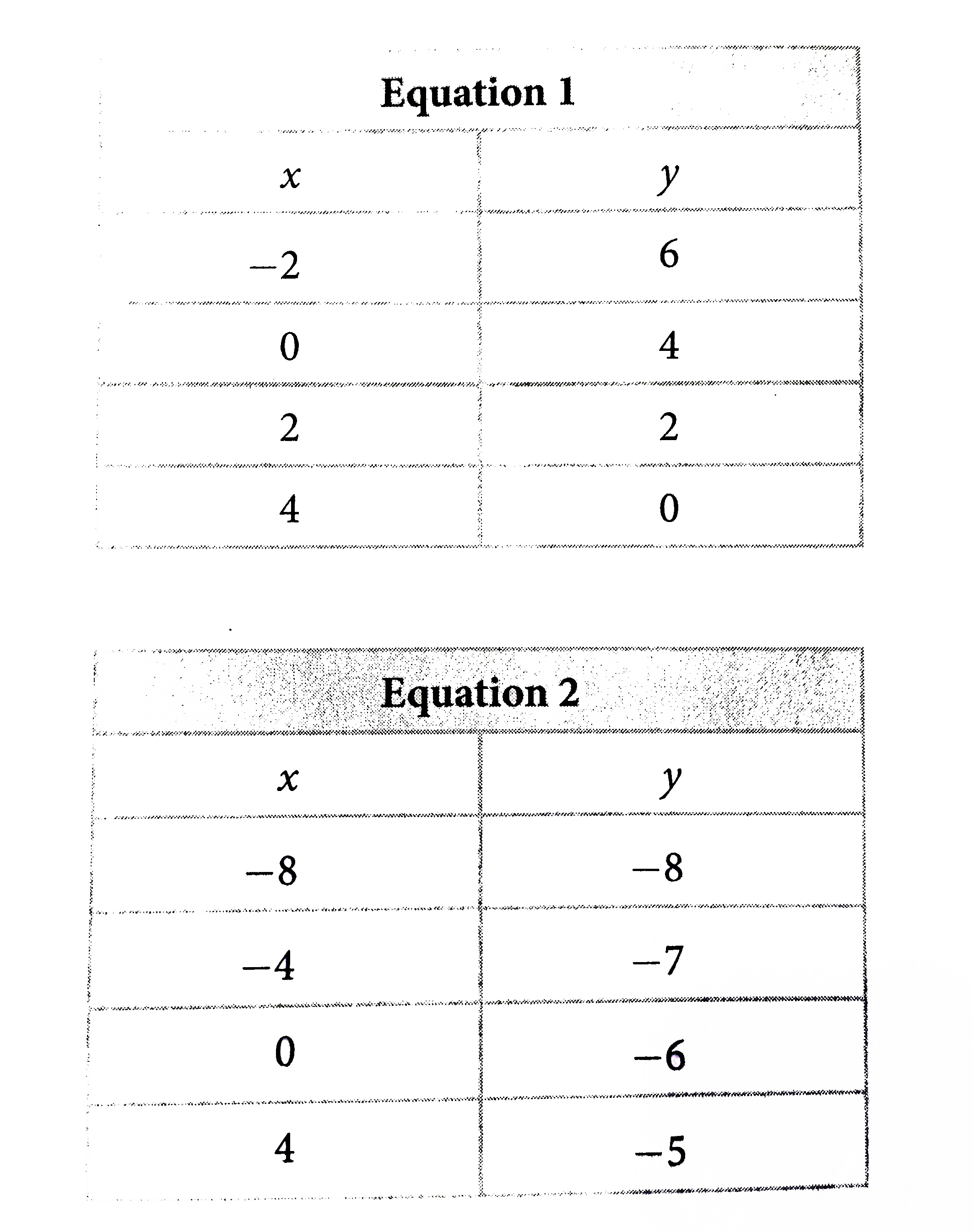Ben correctly solves a system of two linear equations and finds that the system has an infinite number of solutions. If one of the two equations is 3(x+y)=6−x, which could be the other equation in this system?
y=34x+2
y=43x
y=−43x+2
y=−43x+6
The correct Answer is:C
To solve the problem step by step, we need to find another equation that, when combined with the given equation, results in a system of equations with an infinite number of solutions. The given equation is:
3(x+y)=6−x
Step 1: Convert the given equation into standard form
First, we simplify the equation:
1. Distribute the 3 on the left side:
3x+3y=6−x
2. Move x to the left side:
3x+x+3y=6
3. Combine like terms:
4x+3y=6
Now, we have the equation in standard form:
4x+3y=6
Step 2: Identify the condition for infinite solutions
For a system of two linear equations to have an infinite number of solutions, the two equations must be equivalent. This means that the ratios of the coefficients must be equal:
a1a2=b1b2=c1c2
where a1,b1,c1 are the coefficients from the first equation and a2,b2,c2 are from the second equation.
From our equation 4x+3y=6, we have:
- a1=4
- b1=3
- c1=6
Step 3: Analyze the options
Now we need to convert each of the given options into standard form and check which one satisfies the condition for infinite solutions.
1. Option 1: y=34x+2
- Rearranging gives:
3x−4y=−8(or 3x−4y=2)
2. Option 2: y=43x
- Rearranging gives:
4x−3y=0
3. Option 3: y=−43x+2
- Rearranging gives:
4x+3y=6
4. Option 4: y=−43x+6
- Rearranging gives:
4x+3y=18
Step 4: Compare the equations
Now we compare the coefficients:
- For Option 1: 3x−4y=2 does not match.
- For Option 2: 4x−3y=0 does not match.
- For Option 3: 4x+3y=6 matches exactly with our original equation.
- For Option 4: 4x+3y=18 does not match.
Conclusion
The only option that satisfies the condition for infinite solutions is Option 3:
y=−43x+2
3x+3y=6−x
3x+x+3y=6
4x+3y=6
4x+3y=6
a1a2=b1b2=c1c2
where a1,b1,c1 are the coefficients from the first equation and a2,b2,c2 are from the second equation.
- a1=4
- b1=3
- c1=6
- Rearranging gives:
3x−4y=−8(or 3x−4y=2)
- Rearranging gives:
4x−3y=0
- Rearranging gives:
4x+3y=6
- Rearranging gives:
4x+3y=18
- For Option 2: 4x−3y=0 does not match.
- For Option 3: 4x+3y=6 matches exactly with our original equation.
- For Option 4: 4x+3y=18 does not match.
Topper's Solved these Questions
Similar Questions
Knowledge Check
- Question 1 - Select One
Sara correctly solves a system of two lines equations and finds that the system has no solution. If one of the two equation is y6=x4=1, which could be the oher equation in this system?
Ay=23x+12By=32xCy=−32xDy=32x+6 - Question 2 - Select One
15x+14y=2
px+2y=16
In the system of linear equations above , p is a constant . If the system has an infinite number of solutions, what is the value of p ?A85B58C35D18 - Question 3 - Select One
The x-coordinates of the solutions to a system of equations are 3.5and6. Which of the following could be the system ?
A{y=x+3.5y=x2+6B{y=x−7y=−(x−6)2C{y=12x+3y=−(x−5)2+7D{y=12x+7y=−(x−6)2+3.5
Given a system of equations in x,y,z:x+y+z=6,x+2y+3z=10 and x+2y+az=b. If this system has infinite number of solutions, then a2+b=……….
View SolutionGiven a system of equation inx,y,z:x+y+z=6,x+2y+3z=10 and x+2y+azb . If this system has infinite number of solution , then a2+b=………
View SolutionSolve graphically the system of linear equations
x + y = 10 and x - y = 4.View SolutionShow that the following systems of linear equations has infinite number of solutions x−y+z=3, 2x+y−z=2, −x−2y+2z=1
View Solution
The tables above represent data points for two linear equations. If the two equations form a system, what is the x-coordinate of the solution to that system ?View Solution

